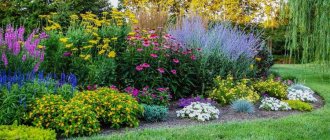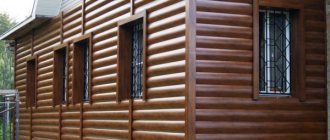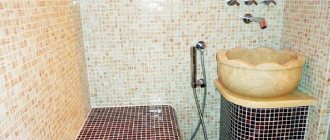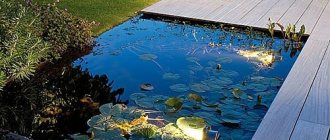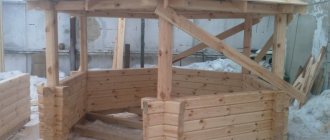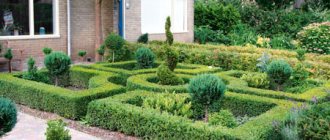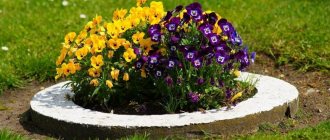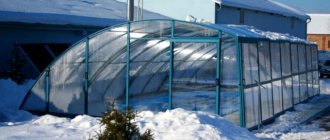Like any important event, planting a future garden on a site begins with planning: how carefully you think through all the subtleties of placing capital and outbuildings, how responsibly you take the choice of a place for trees, shrubs, vegetable and berry plants, the abundance will depend harvest, and the comfort of your stay at the dacha.
When planning a garden, there are many nuances to take into account, so take your time, calculate several suitable options at once, and then choose the best one.
If you want your garden to not only bear fruit, but also to look wonderful, you need to put in a little effort and a little imagination when planting it. This is a very responsible job: it involves a large number of simultaneously carried out processes, in addition, preparatory work and planting must be carried out in a short time.
Planting a garden also deserves special attention because mistakes made during this process are difficult to correct in the future, since fruit trees are planted once for many years.
How to fill your garden with beautiful and fruitful plants? In order to correctly plan your home garden, use the advice of experienced summer residents presented on this page.
Lawn for a summer cottage
You should take care of the base coat. The lawn decorates the garden plot and purifies the air. Grass strengthens the soil and prevents its erosion.
Decorating your garden will allow you to achieve amazing results. A well-groomed lawn will be an excellent decoration for the site. There are several types of coating, each with its own characteristics.
English view
Front lawns are used for decorative purposes. They are used for garden design, they look attractive, but they are not walked on.
The area of such areas should exceed the size of the compositions that are located nearby. The English type allows you to get an even and dense coating.
Style direction
In landscape design, formal and landscape styles are distinguished. To better imagine what the area will look like, you can look at a photo of the garden design on the site.
Formal or regular style requires symmetry of all elements. The landscape option has an open layout.
Planning Tools
For a long time, the best tools to start creating a site plan were a piece of paper, a pencil and an eraser. But recently they have been replaced by special computer programs.
For simplicity, you can take a photo of the site layout from the Internet and find the most optimal one or slightly alter the option you like “for yourself.”
Eastern garden
This direction is characterized by a large amount of crushed stone and pebbles.
Coniferous trees are planted on the territory of the suburban area. Figures are made from stones, paths are made from slabs. A small fountain surrounded by boxwood looks impressive.
Entrance area
The entrance area will not require much space. Most often it is represented by a flat lawn or small flower beds. You should not plant large trees or place a large number of decorative elements here.
The entrance area will be decorated with a path to the house and lanterns.
Country style
This option is suitable for those who want to minimize site maintenance work. A beautiful garden design at your dacha will make your garden area more attractive.
The rustic style allows you to bring any ideas of the owners to life. It will create a feeling of harmony and homeliness.
Playground
A place for the little inhabitants of the site to play is chosen on a small hill, close to the house and away from the pool and sources of fire.
Depending on the age of the children, they will need a sandbox, a swing, a slide, a place for quiet games, and sports equipment. A good option for saving space for older children would be an unusual tree house.
French style
Such a garden must be carefully thought out; it requires special attention and care. The features of this style are straight lines and symmetry.
This garden requires a flat area without changes in terrain. There is a house in the center, and paths go from it in different directions.
The territory should have round ponds, canals, and fountains. Low-growing plants are planted closer to the building.
Bad decisions
When describing the plan for the future garden, unfortunately, it is impossible to take into account absolutely everything. Especially if plans change frequently. However, you should try to avoid common mistakes that can lead to adverse consequences:
- Planting trees in the center or on the south side of the garden. They will provide a lot of shade, and it will no longer be possible to plant many garden crops around them. When purchasing a seedling, it is important to clarify the size of an adult tree, taking into account the crown.
- Purchasing self-sterile fruit trees for a small plot. In this case, it is necessary to take into account that to obtain fruits you will need to plant not one, but two or three seedlings. If the available land is not too large, then the garden will take up a lot of space.
- Installation of a garage in the depths of the site. A road will be required to get to the garage, which will take up most of the valuable territory.
- Heap growing of crops. It is best to differentiate plants (especially if they do not get along well together). The same cultures have the same diseases. Therefore, if, for example, tomatoes are infected, nearby potatoes will become susceptible to the disease. For the same reason, currant and gooseberry bushes are not planted nearby.
- Too many plants in the area. In pursuit of a rich harvest, gardeners try to plant as many different crops as possible. This in most cases leads to the opposite effect. Plants planted too close will begin to compete with each other and end up growing weak. Therefore, you need to adhere to the rules for planting seedlings and seedlings and maintain the proper distance between them to avoid crop failure.
Garden layout
When designing, be sure to take into account the size of the territory, the type of soil, and the number of flower beds. If only decorative crops will be planted, then you can use a round shape to create a flower garden.
To spend less time caring for plants, choose unpretentious crops.
The number of trees and shrubs depends on the size of the plot. A certain distance should be maintained between them so that they do not interfere with each other’s growth.
Fruit trees
In central Russia, apples, pears, plums and cherries can most often be found in orchards. They are adapted to local weather conditions, are not too demanding to care for and regularly produce crops. Peaches and apricots, which prefer the southern climate, are considered more capricious. However, today there are developed varieties of these crops that can be cultivated in the northern regions.
To plan a garden for planting fruit seedlings, you should consider several points:
- Tree size. If they are medium or tall, then the distance between them should be at least 5 m. If the variety is a dwarf variety, then it is enough to take a step between plantings of 2 m. When planning to plant a garden near a fence, 1 m is removed from the structure.
- Pollinability. Many varieties require cross-pollination. To bear fruit, they need companions with the same flowering period. Therefore, such cultures are located nearby.
- Accommodation. Seedlings on the site are placed so that the crown of an adult plant does not cast a shadow on the beds (the average size of the crown is 4 m in diameter). Otherwise, garden crops will stop growing.
Related article:
Weed control under bushes: tips for gardeners
Size
A large property visually reduces the garden area. This imbalance can be corrected independently or you can involve professionals to resolve the issue.
The site should be correctly divided into functional zones and free access to them should be ensured. Buildings visually appear smaller if there are hedges around them. Tall trees are not grown in small areas.Berry bushes
If vegetables should grow in the most illuminated area, then a small shade is acceptable for shrubs. You can distribute the garden for planting raspberries, currant bushes and other berries as follows:
- plant seedlings along the fence or at the border of the site;
- in front of fruit trees (on the south side);
- placed behind buildings (if the general location allows it).
Shrubs such as honeysuckle, blackberry, barberry and others can serve as a beautiful hedge.
To economically delimit the garden, remontant strawberries or raspberries can be planted not traditionally in the ground, but in flowerpots. Thus, the bush will take up less space and will become not only a source of delicious berries, but also a bright decorative element. Growing in a flowerpot is especially rational in areas with harsh winters. In the cold season, it is enough to move the shrub to a shelter.
Related article:
Covering for the winter: 6 most common ways to help preserve plants
Selecting a location
Before designing the garden, a plan is developed. Select a suitable style. All buildings and plantings are plotted on the diagram. By taking into account the dimensions, you will be able to properly use the available space.
If it is necessary to decorate the garden with flowers, then the location of the flower beds must be noted on the plan. You can also draw another diagram, which will detail the location of the plants.
Homestead area
The perception of a suburban area depends on the correct organization of space. If you need to design an area of complex shape, you will need the services of a specialist.
You can try to solve the issue yourself. For this purpose, rounded flower beds are created and ponds are made. Straight paths are not used on an uneven site.
Principles of crop rotation
To have a harvest every year, change the areas for planting plants of the same type. For example, don't plant tomatoes in the same place every year. Pests and diseases of a specific type accumulate in the soil. By changing plants and sowing disinfectant plants, you destroy pests.
Tomatoes, eggplants, potatoes are all nightshades and have the same pests.
So when selecting plants, it is also worth looking at the classification of species. To make it easier to navigate, we present a table of sequence/combination of crops.
| Culture for planting | Good predecessors | Valid predecessors | Bad Predecessors |
| Medium and late varieties of cabbage | Peas, beans, beans, cucumber, carrots, early potatoes | Beetroot, cabbage | |
| Early varieties of cabbage, cauliflower | Onions, cucumbers, beans, peas, beans, sederats. | Carrots, tomatoes. | Root vegetables, cabbage |
| Beet | Potatoes, cucumbers, greens, green manure. | Tomatoes, onions, carrots, cauliflower and early cabbage, | Beetroot, late and mid-season cabbage |
| Cucumbers, zucchini, squash, zucchini | All legumes, onions, garlic, cabbage, except late cabbage. | Potatoes, beets, greens | Tomatoes, carrots, late cabbage. |
| Tomatoes | Cucumbers, turnips, cauliflower, greens, green manure. | Onions, beets, cabbage of medium and late varieties. | Tomatoes, potatoes |
| Onion garlic | Legumes, potatoes, cucumbers, cauliflower and early cabbage | Beets, tomatoes, late cabbage | Greens, carrots |
| Potato | Legumes, green manure, cucumbers, cauliflower and early cabbage | Beets, carrots, mid and late cabbage, greens | Tomatoes, potatoes |
| Greenery | Legumes, onions, cauliflower and early cabbage, cucumbers, green manure | Potatoes, beets, greens, tomatoes | Carrots, late cabbage |
| Legumes | Potatoes, onions, garlic, whole cabbage, cucumbers | Root vegetables, green manure, greens, tomatoes | Legumes |
How to “change” vegetables in the garden beds
If you change places for planting plants according to the table above, it is most convenient to divide the garden into 4 parts. For the first time, plant plants that have the same requirements for soil and fertilizers in a certain area. For example:
- Responsive to the addition of organic matter: pumpkin, cucumbers, squash, cabbage.
- Less demanding soil qualities: tomatoes, peppers, eggplants.
- Root vegetables (carrots, beets, turnips, turnips, rutabaga).
- Potato.
Next year we are moving everything forward. In the fall, we add humus to the area where the potatoes were. We plant plants of the first group there. Plants from the second group move to 1 plot, etc. Schematically, the first option for crop rotation for a vegetable garden is shown in the left figure below.
Correct crop rotation in the garden - what to plant next
Sometimes potatoes and tomatoes take up half the area. In this case, we divide the second half into three sections, where we place the plants of the remaining groups. Every year, potatoes/tomatoes move from one half to the other, and the vegetables in the second half also alternate with each other. This crop rotation is shown schematically in the right figure.
Selection of plants
Flowers, grass, bushes and trees are purchased in accordance with the chosen direction. Tall crops are planted first. Afterwards you need to take care of the flowers, which are placed according to the developed scheme.
Designing a small garden requires special attention. All elements are carefully selected to create a beautiful landscape.
Roses are purchased for the garden, which can become a bright accent. To create compositions, choose hydrangea, daylilies, dahlias, and peonies.
Green manure
A gardener has two global tasks: maintaining or improving soil fertility and fighting weeds. There is one method that will immediately solve both problems - the use of green manure. These are plants that grow quickly and form dense greenery that suppresses the development of weeds. They are sown after or before the main sowing/planting, then the greens are cut off, leaving the roots to rot in the ground. By rotting, they enrich the soil and also make it looser. And some of the green manures also kill diseases. So this agricultural technique is really very important.
This is not out of stupidity. This is an agricultural technology to improve soil fertility
Rules of application
Several basic techniques for using green manure. They are sown immediately after harvesting in a continuous carpet (lupine, rapeseed, phacelia). Or in early spring before planting the main crops. Scatter the seeds over the surface, then cover them with a rake. Two to three weeks before planting the main plants, green manure is mowed. Greens can be used for mulching. You need to cut it before the seeds appear, otherwise you will get a new type of weed.
Growing seedlings using green manure
When planting seedlings, green manure does not need to be mowed. We just make the hole larger, plant the seedlings, and mulch the soil. If green manure covers the sun, they can be trimmed, but in general, they even out temperature fluctuations. When the seedlings have taken root, you can cut off the green manure and mulch the soil with leaves.
What types of green manure plants are there and their choice
Many plants are suitable for improving soil health. When choosing green manure, take into account what you will plant after it.
- They enrich with nitrogen almost like adding manure: alfalfa, clover, sweet clover, china, lentils, peas, beans, etc. They also kill the nematode.
- General improvement of the condition of the upper layers of the soil and the fight against nematodes: winter rye and wheat, spring oats and barley, Sudan grass, millet, fescue. Dense greens do not rot very well, but make excellent mulch. Suitable for all types of soils, including acidified ones.
Green manure plants have different properties, but they all improve soil condition
- Soil enrichment (not suitable for acidified soils): rapeseed, mustard, rapeseed, radish. The greens are soft and rot well, but they need to be mowed before the “arrows” are pasted. After green manure from this group, you cannot plant cruciferous vegetables - cabbage, radishes, radishes, spinach, arugula.
- Phacelia, mallow, amaranth, flax, calendula, tagetes (marigolds) are also good for increasing soil fertility. It is necessary to mow before the buds appear.
To suppress weeds, green manure can be sown not only in spring or autumn—row spacing can also be sown in summer. Just remember to mow on time. The greens will be used as mulch. For regions with hot climates, green manure can be planted after the main plants have taken root. In this case, dense greenery will keep the soil from overheating.
If you plant oats/barley and legumes, or flax and calendula between the potato rows, there will be fewer Colorado potato beetles and nematodes. And phacelia and mustard will help get rid of wireworms. Plant sweet clover and lupine between the tomato bushes - they will prevent horse rot and late blight from developing.
Furniture items
For relaxation and entertainment, various items are installed in the garden. It’s hard to imagine the design of a garden plot without furniture that will provide comfort and help zone the space. Hammocks and sun loungers are chosen from durable materials that are resistant to precipitation.
Lightweight structures that can be easily removed and re-arranged are suitable for the dacha. All items must be in harmony with the design of the garden and fit perfectly into the landscape.
Communications
For a comfortable stay, it is necessary to provide electricity and water supply to the necessary facilities.
Electrical energy will be needed in a house, barn, bathhouse, garage, gazebo. If you need to illuminate the courtyard, you will also have to run a cable to the lights.
Water will have to be provided to the garden, vegetable garden, bathhouse.
The pool will need both water and electricity.
Garden care
A beautiful area requires careful maintenance. In the fall, you need to harvest and periodically remove flying leaves. To prevent plants from being attacked by pests, it is necessary to carry out timely protection measures.
In case of abundant harvests, the branches should be supported so that they do not break under the weight of the fruit. It is important to properly fertilize plants; the beauty of the landscape and productivity depend on it.It is necessary to prepare the garden for winter by covering the seedlings and treating the tree trunks with whitewash.
Beautiful garden bed.
The basic principles of garden design are quite applicable to the vegetable garden, because voluminous decorative compositions can be created from almost any plant.
Tall plants are suitable for single planting and creating a background: sunflower, corn, dill, amaranth, Jerusalem artichoke, lovage, rhubarb, tall tomatoes. Sorrel and horseradish will find their place under the rhubarb, mint, oregano, perennial onions, borage and herbs will complement and decorate it with flowers and umbrellas.
Vertical gardening will help to give the composition additional volume so that the garden does not seem flat: this can be zucchini, pumpkins, cucumbers, beans, beans or peas, mounted on supports. You can also add flowering ornamental plants to them, for example, calendula, marigolds (tagetes), nasturtium, which drives away pests.
Low-growing plants with bright colors or beautiful foliage texture are great for the border: chard, basil, lettuce, carrots. And thyme, oregano, catnip, parsley and coriander will also benefit others by repelling insects and creating a barrier to weeds.
Flowering plants will become color accents: low annuals, bulbous plants, even small shrubs that are not prone to the formation of shoots. Some ornamental plants not only decorate the beds, but also bring tangible benefits, repelling pests and improving the composition of the soil. Marigolds, which have both properties, are considered especially favorable neighbors for garden crops.
Photo of the garden
Total
Category: Landscape elements
